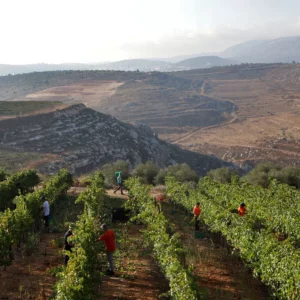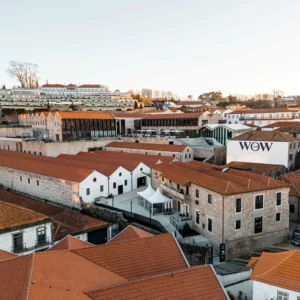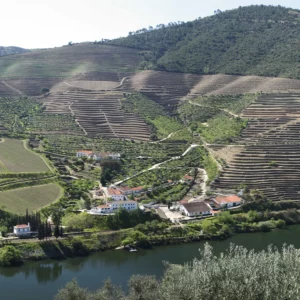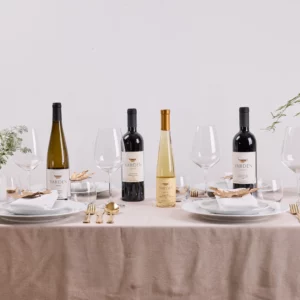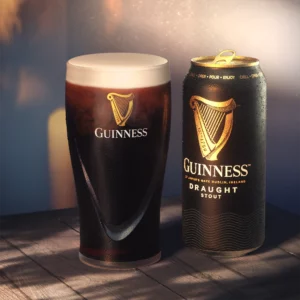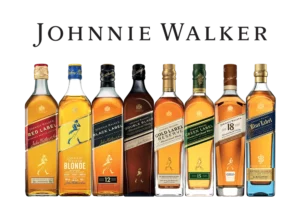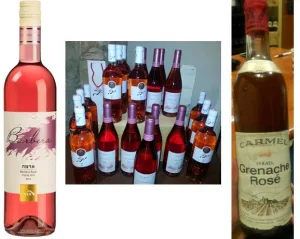One of the T shirts most often seen being worn by winemakers carries the slogan: “It takes a lot of beer to make fine wine.” Even wine people need a break from wine tasting sometimes, and when they do, they drink a lot of beer!
So let’s talk beer. Babylon and Egypt were great beer making empires in times gone by. Amusingly, archaeologists recently found fragments of pottery used by Egyptians to make beer, dating back 5,000 years, at a building site in Tel Aviv of all places!
However there was always a certain snobbery between the drinks produced from the grain and the grape. Wine was the drink of kings, empires and the ruling elite. Beer was the bread for the serfs and the working man. Also grain grew where the vine could not. In Israel, there was never any problem growing vines and one of the reasons that wine was the choice of industry of the first aliyah, was that the grape vines flourished, whereas the wheat and barley planted did not survive.
The first brewery in Israel was adjacent to Rishon Le Zion Wine Cellars, It was known as Palestine Beer Breweries. It was founded in 1934 by Frenchman Gaston Dreyfus and James Rothschild. Of course Israelis did not drink beer in those days. The only people drinking beer were the British.
When the British Mandate came to an end, sales crashed and the brewery was eventually closed in 1960. However it will be remembered for two names which live on: Israel’s first beer brand, Nesher, was produced there in 1934 and Israel’s leading selling beer, Goldstar was first produced there in 1950!
The National Brewery continued to fly the beer flag, until a soft drink company called Tempo gathered the various strands under one roof in 1985. Thus was born Tempo Beer Industries in Netanya and it became and still remains Israel’s largest brewery.
Its major competitor, Israel Beer Brewing Ltd (IBBL), then known as Carlsberg Israel, was founded in Ashkelon in 1992 and for the first time Israel had the beginnings of a competitive beer industry.
In the late 1990’s Tempo and IBBL started importing beers or making them under license in Israel. Each now has a full arsenal of international brands to ensure they can provide a full range of styles.
Tempo distributes Heineken, the famous Dutch beer, Samuel Adams, the beer that began the USA craft beer revolution, Murphy’s from Ireland, Paulaners from Germany , Staropramen, a Czech beer and Newcastle Brown from England.
IBBL’s lineup is Carlsberg, and Tuborg from Denmark, Stella Artois, Leffe and Hoegarden from Belgium, Weihenstephan from Germany and the one and only Guinness, from Ireland.
In the 2000’s, about 10 years after the boutique wine revolution, a micro-brewery movement was born, and the result was a number of boutique producers making beers of individuality and variety to add color to the Israel beer scene. Dancing Camel was the first craft brewery founded in 2006 and it was swiftly followed by Alexander, Bazelet, Jem’s, Malka, Negev, Shapiro and many others. All are making genuinely good beers and should be supported.
So Israel now has a more vibrant beer market than ever before. The major brands are in the supermarkets, but visit the local wine shop and quality bar, and they will as likely or not stock beers from smaller producers. However Israel remains a tiny country in terms of production and consumption.
The greatest brewing nations are the Czech Republic, Germany, Belgium and Britain. Czech breweries were the first to use hops and they invented the pilsner style of beer. The Czech Republic has the highest beer consumption per head in the world.
Germany is famous for instigating the beer purity laws. They have more breweries than any country in the world. They are famous mainly for Pilsener style lagers and also for wheat beers.
Belgium has the largest range of beers of any country and some styles unique to them, like Lambic beers. They have a beer culture not dissimilar to the wine culture in France.
Britain is famous for its ales, and cellar conditioned draught bitter, (Real Ale), drawn by hand pump, and Ireland is well known for its stouts, in particular Guinness.
However none of them are the largest beer producer in the world. That honor goes to the Americans. Fortunately their craft beer, microbrewery revolution has infused their volume based beer industry with some quality and interest.
Whereas wine is made from grapes, beer is a simple product that comes from grain, usually barley. The only other ingredients are water, yeast and hops. The barley is steeped in water to leech out the fermentable starch. The resulting malty liquid is fermented with yeast, which eats up the sugars, flavored with the addition of hops and the result is an alcoholic beer.
Beers tend to be Lagers or Ales. Lagers are like white wines, in which fermentation is at cooler temperatures for a longer time. The idea is to create a drink which is super refreshing and served very cold.
Ales are like the red wines. Fermentation is at a higher temperature and for a shorter period, producing a more flavorful product. The main difference is in the yeasts. Lager yeast ferments at the bottom of the fermenting vessel, and works more slowly. Ale yeast ferments at the top and works faster.
The most influential lager is the Pilsener style, made famous by Pilsener Urkell from the Czech Republic. The shortened version known to drinkers worldwide is Pils. This has created the most popular style of beer in the world which conquered all in the second half of the 20th century. San Miguel is a Pilsen style lager.
Most of the largest global brands are lagers, but big brand often equals bland, and some the largest selling beers do not have much character. Fortunately there is more variety today, and consumers can pick and choose.
Colors of lagers can vary from the pale gold Pilsener to the rustier deeper colored Goldstar for instance. There are also amber colored lagers and even dark lagers, but the popular style is beautifully colored, with a tight head of small bubbles. It makes you thirsty just looking at it. Carlsberg, Heineken and Stella Artois are examples of pale lagers.
Ales vary in color from the Blonde, a term used in Belgium, which as its name suggests looks like a pale lager, to the dark stout, which is as black as coca cola. The difference in color is dependent on the level of roasting of the malt.
Abbey beers are made in Belgium, usually produced by Trappist Monasteries. They are strong and fruity, sometimes with a touch of sweetness. Leffe Brown is an Abbey beer.
Pale Ale is a style that originated in Britain. It is pale because of the use of paler malts. Bass is a famous pale ale first made in Burton on Trent in 1777. Fuller’s London Pride comes from London. Newcastle Brown is a darker, nuttier version of ale, produced in the north of England.
IPA stands for Indian Pale Ale. When beer was shipped to India, extra handfuls of hops were thrown in to act as a preservative on the long journey. Hence IPA’s tend to be hoppier, fruitier with a balancing bitterness.
Wheat beers or Weissbeers are ales made from the use of wheat. They are often cloudy being unfiltered with a very yeasty, aromatic aroma. These are like the aromatic wines made from Muscat or Gewurztraminer grape varieties. Examples are Hoegarden, Paulaner and Weihenstephan.
Stouts are ales which are as black as night, with a bitter sweet character and nose of malt and mocha and a creamy head from the use of nitrogen. The daddy of them all is Guinness and Murphy’s is another Irish stout. For those who have Guinness for the first time , start with the draft. It is smoother, whilst in the bottle, the bitterness loved by Guinness drinkers is more apparent.
Of course, there is so much more variety. As always, find what you like and enjoy experimenting with new styles. For more information, I recommend any books by the late Michael Jackson, (no relation), who was the Hugh Johnson of the beer world. In Hebrew the best guide is the book Beer and Beyond by Shahar Hertz (www.beerandbeyond.com)
Sometimes a shluk (taste) of beer can be the only cure for long hot Israeli summer.



